Indoor flowers
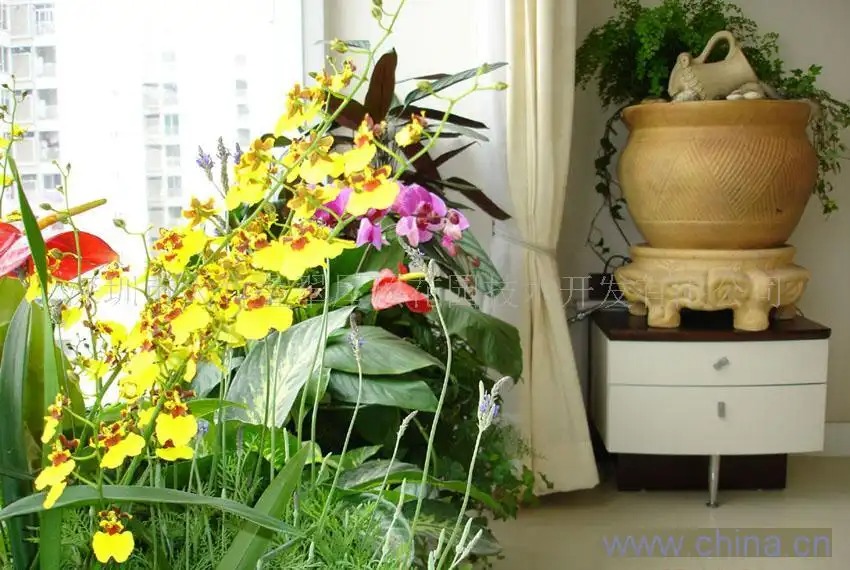
Nowadays, many families like to place some potted flowers indoors to beautify the room. However, some families, despite having a lot of flowers, still make people feel uncomfortable and even depressed. The reason is that they do not know the essentials of indoor flower arrangement. Indoor flower arrangement should generally be dominated by foliage plants. Because the habits of foliage plants are mostly warm and shade-tolerant, they are suitable for "living" indoors for a long time. Moreover, the leaf shapes and colors are varied, and they also have high appreciation value. For example, the beautiful and quiet asparagus fern, water bamboo, and phoenix tail bamboo; the elegant and unrestrained book belt grass, spider plant, and ivy; and the strange leaf shape, dignified and generous monster bamboo, rubber tree, and evergreen, etc., are all good products for indoor greening decoration. If the room is small and the lighting conditions are poor, you can choose plants with short plants or plants that can be made into miniature bonsai and are shade-tolerant, such as Ardisia, Daphne, Dwarf Yew, Boxwood, June Snow, Yangmu, etc.; you can also pot some hanging spider plants. If the room is large or there is a balcony or other place to grow flowers, but the sunlight is insufficient, in addition to the above plants, you can also plant some semi-shade plants, or plants that like light and tolerate shade and have larger plants, such as cycads, hollies, podocarps, kumquats, golden beans, hollies, nandina domestica, Chinese ivy, gold-edged or silver-edged ivy, creepers, etc.
Tips for arranging indoor flowers
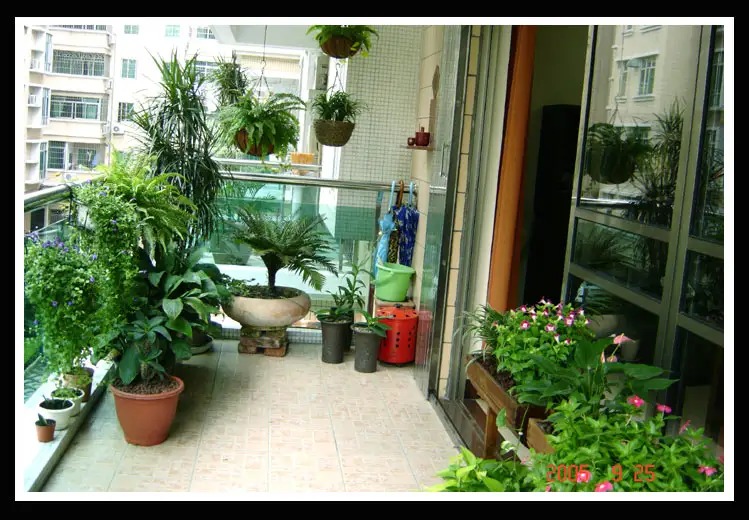
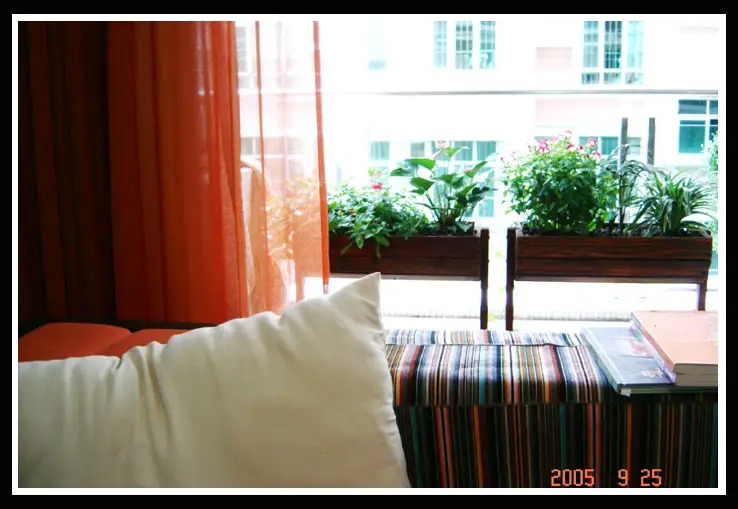

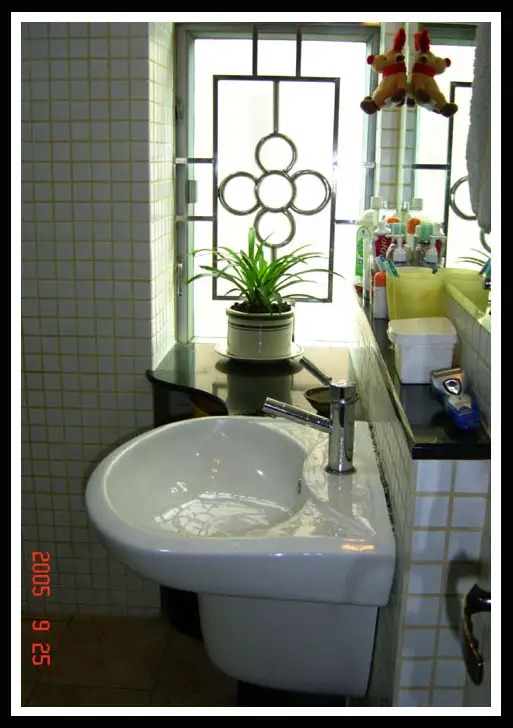
In winter, most of the potted flowers in the home are brought indoors for maintenance. If they can be arranged reasonably, the indoor greenery can be kept and the house is full of life. On the sunny side, camellia and wax red can be placed on the windowsill and the cabinet in the living room; asparagus or daffodils should be placed on the desk; spider plants and Christmas cacti should be hung slightly above the horizon; cycads, bamboo palms, and dieffenbachia can be placed on the flower racks in the hall and corridor; if a small bonsai or Clivia is placed on the coffee table next to the sofa, it will give people a sense of freshness and elegance. Flower branches in a vase is a good way to decorate the room and beautify the environment. It is economical and flexible. Often, a bottle of elegant and fashionable flower arrangement can add a lot of brilliance to a plain and simple room. When arranging flowers, there should not be too many branches in a vase. 3-4 branches are enough, otherwise it will feel crowded and messy. When arranging flowers, pay attention to highlighting the main body, staggered height, gorgeous but not vulgar, so that it looks graceful and makes people never tired of it. The current flower arrangement materials include wintersweet, silver willow, Nandina domestica, etc. The water in the bottle should be replaced every 2-3 days, and a small amount of preservatives such as salt should be added to the water to extend the flowering period. When decorating the room with potted flowers and flower arrangements, they need to be replaced appropriately, which will bring freshness, fragrance and elegance to your family, and have the artistic effects of natural scenery, color, fragrance, and posture.
Some flowers should not be placed indoors.
Indoor flower cultivation is beneficial to beautifying the environment and human health. However, some flowers and trees are not good for the human body and should not be viewed or touched for a long time. For example, flowers such as night-blooming jasmine, which emit a large amount of waste gas without photosynthesis, will make patients with hypertension and heart disease feel depressed; the rosin oil released by pine and cypress plants will affect people's appetite and make pregnant women feel nauseous; hydrangeas will cause allergic reactions in some people; tulips contain toxic alkali; mimosa contains mimosine, and excessive contact will cause people's hair to fall off. These flowers should not be placed in rooms where people live. Disinfection of
potted flower soil There are three simple and easy methods for disinfecting potted flower soil: wet the soil and put it in a large lead barrel, or take it outdoors and dry it with fire. Wet the soil and put it in a pressure cooker with 15 pounds of pressure and steam it for 20 minutes. Fumigation with volatile chemicals, that is, put methanol, bromide and other chemicals together with the soil into a sealed container for fumigation. No matter which method is used to disinfect the soil, it must be used after 2-3 days. Common sense to judge whether indoor plants need to be repotted See whether the growth rate of the plant slows down, or whether it wants to drill out from the drainage hole at the bottom of the pot. If the growth rate of the plant slows down or there are roots drilling out from the drainage hole at the bottom of the pot, it means that the pot needs to be repotted. Put the pot on its side, put your finger into the drainage hole, and push the mud ball with the plant out of the clay pot. Check it out. If you see that the mud ball is entangled, it means that the pot needs to be changed. Identification method for potted flowers lacking water Knocking pot method: tap the pot wall with your fingers, and a crisp sound will occur. Pressing soil method: press the surface of the pot soil with your fingers, and the pot soil is hard. Leaf observation method: the branches and leaves of potted flowers wilt and droop. Soil observation method: the surface of the pot soil turns white. The above are all phenomena of potted flowers lacking water. To check whether potted flowers lack water, only using the above method is sometimes inaccurate, and more than two methods should be used at the same time. The water temperature of flowers should not be too different from the air temperature. You can choose to water them appropriately in the morning and evening, or adjust the water temperature. At the same time, pay attention to the dosage: water herbs more, woody less; water more flowers that like moisture, and less flowers that like drought; water more with large and soft leaves , and less with small and waxy leaves ; water more during the vigorous period , and less during the dormant period; water less with large seedlings and small pots, and less with large seedlings and large pots; water more on the balcony , and less in the small courtyard ; water more when it is hot, and less when it is cold; water more on dry days, and less on cloudy days; water more when buds are pregnant, and less when they bloom. Special reminder of water quality, rainwater and snow water are best. Tap water can generally be used. If the disinfectant content is high and the odor is strong, it must be stored for 2 days and used after precipitation and dissipation. Well water is generally not suitable for use because it contains various impurities. What to do if no one waters the flowers at home when you are away? When you are on a business trip or traveling and no one waters the potted flowers, in summer, you can move all the potted flowers outdoors and water them thoroughly; in winter, you can pinch off the flowers and flower buds on the indoor potted flowers (whether they are blooming or not) to reduce the consumption of nutrients in the potted flowers, and water them thoroughly before leaving. If you are away for a few weeks, you can bury the pots in a box filled with peat or sawdust, because mud and sawdust have good heat preservation functions, which can prevent the potting soil from drying too quickly. At the same time, put plastic bags on the pots of some plants with higher humidity requirements, but do not tie the bag mouth too tightly, so that the plants have room for ventilation to prevent diseases caused by excessive humidity. You can also fill a plastic bag with water, pierce a small hole in the bottom of the bag with a needle, and put it in the flower pot. The small hole is close to the soil, and the water will slowly seep out to moisten the soil. Pay attention to the size of the hole to avoid water seepage too quickly. There is also a clever way. You can put a large glass bottle filled with cold water next to the flower pot, and then find a wide cloth strip with good water absorption. Put one end of the cloth strip into the bottle of water and bury the other end in the soil of the main flower pot. In this way, water can be transported to the flower plate through the cloth strip, and the potted flowers can remain moist for about half a month. Key points for safe wintering of potted flowers Flower growers in the Yangtze River Basin should usually move potted flowers indoors before the beginning of winter, and apply phosphorus and potassium fertilizers to the flowers several times in autumn to promote the strength of the rhizomes and enhance their cold resistance. When the temperature is lower than the suitable temperature, the flowers will enter a dormant state. At this time, the root system has extremely weak breathing power. It is best not to water too much or too wet. Death often occurs due to excessive watering, so mastering watering is the key. Flowers are most afraid of wind invasion. If they are moved out to dry when they see good sunshine, it is easy to cause fatal damage to the flowers. Taking Milan as an example, the winter requirement is not less than 5 degrees Celsius, and the indoor humidity will not die even if it gradually drops to 0 degrees. The most feared thing is the cold wind invasion and sudden drop in temperature. The temperature of the potted flower room should also be stable in spring, so that it can gradually adapt to the outdoor environment, otherwise it will be easily injured by the cold wind in early spring. Key points for autumn management of potted flowers After autumn, the potted flowers have their roots growing first, so they need to absorb water and obtain a variety of nutrients at the same time. At this time, water and fertilizer must be supplied in time. Apply light fertilizer liquid every half a month or so, and the amount should gradually increase from a small amount. For flowers and fruits such as magpie flowers, pomegranate flowers and kumquats, phosphorus and potassium fertilizers should be applied; pay attention to the prevention and control of diseases and insects, check the potted flowers frequently, remove scale insects and red spiders, and make them ventilated and light-permeable to enhance disease resistance. For flowers that are dormant in summer such as cyclamen and Clivia, repotting, soil change or division can be carried out at this time. For positive flowers such as roses, chrysanthemums, and cacti (bulbs), they should be exposed to full sunlight in time; jasmine and Milan still need shade at noon, so that the flowering period is long and the fragrance is strong; for negative flowers, it is necessary to ensure that they see light in the morning and evening; Clivia can stay outdoors overnight, but it should be moved to a ventilated place indoors in the morning, and it can be exposed to full sunlight after October to make it grow and bloom. For camellia, one excellent bud should be retained, and the excess buds should be removed; for chrysanthemums, the side buds should be wiped off, the buds should be thinned out and the buds that are too dense, not in the right position, with diseases and insects or weak branches should be cut off; the residual flowers such as Tangchangbo and canna should be cut off in time, so that the nutrients are concentrated in the bulbs to expand rapidly, and the bulbs can be dug up in late autumn and stored in a ventilated place. Key points for identifying fertilizer deficiency in potted flowers for flower fertilization : Lack of nitrogen fertilizer will cause potted flowers to grow slowly, with yellow leaves, and even premature aging. Lack of potassium fertilizer, potted flowers do not develop well, the edges of the leaves look like they are burned, they do not grow vigorously, and finally dry up. Lack of phosphorus fertilizer , potted flower leaves and stems show purple-red spots, few new roots, small plants, and slow growth.
Fertilization at home should pay attention to the season. Generally, more nitrogen fertilizer is applied when the branches and leaves grow, more phosphorus fertilizer is applied when flowering, and potassium fertilizer is applied in moderation to enhance the ability of flowers to survive the winter. Usually, except for the rainy season, more liquid fertilizer can be applied from spring to summer. After the dog days, less liquid fertilizer should be applied, and dry fertilizer should be used instead. During winter dormancy, except for potted plants that bloom in early spring, fertilization is generally stopped. It can also be fertilized once every 10-15 days. For potted plants placed indoors, fertilize once a month.
Fertilization methods:
1. Apply light fertilizer frequently, preferably liquid fertilizer, and do not let the fertilizer fall on the leaves.
2. Do not fertilize sick flowers or flowers that have not yet taken root after being transplanted.
3. Before fertilizing, the potting soil should be dry and loose.
4. Try to fertilize in the evening or on cloudy days, and water again on the second day to help the roots absorb fertilizer.
5. Clean the dust from the branches and leaves. Generally, use an old toothbrush dipped in clean water, or use the clear liquid of boiled tofu containing alkaline to clean it after cooling, which can make the branches shiny and prevent insect pests.
Three elements of
flower fertilizer: Nitrogen fertilizer plays a major role in the growth of flower branches and leaves. Adequate nitrogen fertilizer can make the branches and leaves lush and green. Phosphorus fertilizer can promote the germination, rooting, flowering and fruiting of flower seeds. Potassium fertilizer can make the stems and branches of flowers hard and strong.
How to make flower fertilizer at home:
1. Rotten leaf mud contains nitrogen, phosphorus and potassium, and has the effect of improving soil properties. When piling, you can use the empty space in the corner of the wall in front of the window to dig a pit, or put a waste box in the corner of the balcony (covered with a layer of soil or mountain mud), put in chopped vegetable peels, bean skins, fruit peels, fish heads and intestines and other organic matter, then pour a small amount of water to mix and cover with soil, cover tightly and compact.
2. The fermented bean cake powder contains phosphorus and potassium fertilizers, which can make the flowers bright. It is unhygienic for urban residents to use human urine to grow flowers. Instead, they can use bean cake soaked in water. Put the cake powder into a sealed basin or can for fermentation. In summer, it can be used to water the flowers after one month. In winter, the fermentation is slow, and the bean cake powder needs to wait until it turns black before pouring it out. It is diluted 20 times with water and used as topdressing.
Clever use of waste as flower fertilizer
Flowers, like other plants, need a lot of nitrogen, phosphorus and potassium during their growth. Some flower lovers often worry about fertilizers for growing flowers, looking for fertilizers for growing flowers everywhere, and some even use some chemical fertilizers that promote the growth of crops, which will bring side effects to the growth of flowers. In fact, there are many things in our lives that can be used as good fertilizers for flower growth. Nitrogen fertilizer is the main fertilizer that promotes the growth of roots, stems and leaves of flowers. Rotten beans, melon seeds and peanuts are all fermented and poured into the soil for growing flowers, which is a good nitrogen fertilizer. Fish bones, egg shells, bones, etc. are common phosphorus fertilizers in life. If they are mixed evenly in flower pots in appropriate amounts, the flowers will be colorful and fruitful. Rice swill and leftover tea water are good potassium fertilizers in life. Reasonable use can improve the ability of flowers to resist lodging and prevent pests. Improper use of pesticides
for flower
pest control will not only fail to completely eliminate the insects, but also harm the flowers. In mild cases, the leaves will fall off or turn yellow, and in severe cases, they will wither or even die.
Four simple methods for removing insects from potted flowers
If there are small white insects, small white moths, red spiders, etc. on the flowers, you can tie a cotton ball to one end of a small wooden stick, dip it in "DDV" solution, and insert the other end into the flowerpot. The insects on the flowers will be killed quickly. If the pest is more serious, insert the "DDV" cotton ball stick in the center of the pot, and then cover the flower with a plastic bag. In one night, all the insects will be killed.
Use washing powder and all-purpose detergent to make a 500-1000 times solution to prevent and control most flower pests. When using washing powder solution to kill insects, it is not advisable to spray too much, otherwise it will make the soil alkaline.
Mash 30-40 grams of garlic, filter out the juice, dilute with 10 liters of water, and immediately spray the plants. It has a certain effect on preventing and controlling flower and tree pests.
Soak 50 grams of cigarette butts in 1 liter of water for two days and nights, then filter out the cigarette ends. When using, add 1 liter of water and 2-3 grams of soap powder, stir well and spray on the affected flowers and trees to treat flower and tree pests.
Leek can prevent azalea diseases.
Azaleas infected with black spot, downy mildew, powdery mildew, and damping-off will affect the growth and flowering of azaleas, and even die in severe cases. Here are 3 simple and easy prescriptions.
1. Place a pot of leek next to many azalea pots, or place azaleas near the leek bed, and there will be no diseases.
2. Soak leek leaves in clean water for 24 hours (0.5 kg of leek plus 5 kg of water), and use this water to water azaleas 1-2 times a day to prevent black spot and powdery mildew. The test shows that the disease-free rate of azalea watered with leek water is 100%. The disease rate of plants that are not watered is about 60%. If this water is used to water after the disease occurs, the disease will be alleviated.
3. Spray leek leaf water. Use leek soaked water every morning to spray the leaves of azaleas suffering from black spot disease. Spray it for 7-10 days and the disease will be cured and the branches and leaves will be lush. Use cigarette ash to grow flowers and kill insects.
Sprinkle the extinguished cigarette evenly on the surface of the pot soil. When watering, the ash will seep into the pot, and the toxic substances in the ash are enough to kill the insects in the pot soil. In addition to killing insects, cigarette ash is also a hormone. Sprinkling it in the pot soil is conducive to the rapid growth of flowers; at the same time, cigarette ash is also plant ash, which is also an organic fertilizer when mixed in the pot soil; cigarette ash is alkaline, which can neutralize the pot soil (acidic) that is often fertilized with tofu water fertilizer.
Use onions to prevent powdery mildew on flowers
. Use 500 grams of the outer layer and rotten leaves of onions, mash them into residue, add 7500 grams of water, filter and spray, which is effective in preventing and controlling powdery mildew on flowers
.
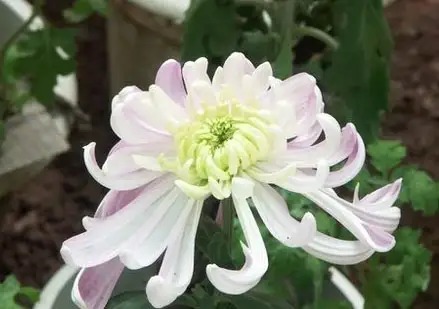
Chrysanthemum cutting and management skills
Chrysanthemum blooms in autumn, but it is planted in the plum season after the grain in ear. For home potted plants, humus fertilizer and garden soil are often mixed into culture soil. Usually the cutting method is used, which is easy to preserve the pure characteristics of the variety. It is best to choose seedlings that are about 10 cm long, strong, and free of diseases and insect pests. After the seedlings are transplanted and alive, until early August, that is, the beginning of autumn, pay attention to pinching, picking buds, and controlling the crown of the plant to promote the development of roots. After the beginning of autumn, no more pinching and picking buds. Generally, four flower heads are left in each pot. During this period, thin fertilizers should be applied frequently, and the content of fertilizers should be from light to heavy. The fertilizers applied must be fully corroded, and old fertilizers are better. When the buds begin to bloom, fertilization stops. If you want to make the flowers large, you can use the potting method. That is: plant the chrysanthemum seedlings with roots in two overlapping pots filled with culture soil, so that one chrysanthemum seedling grows two sets of roots in the two pots respectively, so that it can fully absorb nutrients; after the flowers are formed, shovel the roots at the bottom and move the upper pot out. If this method is used on the ground in the courtyard, the effect will be better.
The key to prolonging the flowering period of chrysanthemums is that
chrysanthemum growers have this experience: "The chrysanthemums are still proud of the frost." That is to say, chrysanthemums are cold-resistant. If they are placed in a frosty night when they are in full bloom, they will bloom very beautifully. In addition, chrysanthemums are semi-shade and semi-sun plants. They should not be exposed to the sun for a long time, nor should they be kept indoors for a long time. Give them appropriate sunshine every day, especially sunshine at noon, preferably for 3 hours. Keep them indoors for the rest of the time. When the temperature is too low, take them out for the night and bring them indoors when the frost melts. Keep them moist in the pots and spray water on the leaves frequently. In this way, the chrysanthemums will bloom for a long time and be bright, and the stems will not become soft and tilted.
camellia
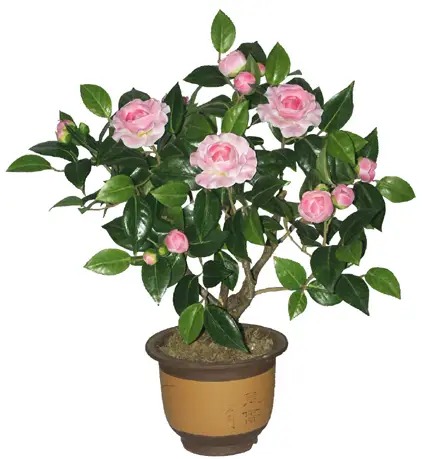
Camellia management tips in summer
Camellia is an evergreen shrub with white and red colors, and single and double petals. Camellia flowers are colorful and bloom around the Spring Festival. It is a good variety of ornamental flowers for families in winter. In order to make camellia bloom more during the Spring Festival, summer management of camellia is a very important part. There are mainly the following aspects:
Apply phosphorus and potassium fertilizers: Camellia enters the growth stage in summer, germination begins to differentiate, and fertilizers mainly based on phosphorus and potassium should be applied. Chicken, duck and rabbit manure fertilizer liquid should be applied every 10 days or so. Nitrogen fertilizer should not be applied to prevent the spring shoots from continuing to grow and making it difficult to see flower buds. Camellia avoids high temperatures and scorching heat. It is not easy for camellia to grow buds when the temperature is above 35 degrees Celsius. At this time, the camellia should be moved into the shade to avoid sunlight. Camellia likes moisture, and water should be sprayed once in the morning and evening, but avoid water accumulation in the pot.
Picking summer shoot buds: In order to enable sufficient nutrients to be concentrated on flower bud differentiation, they should be removed in time when they sprout to the size of mung beans in summer.
Cut off the strong roots: Plants that grow too vigorously are not conducive to germination and differentiation. Some of the strong roots can be cut off to reduce the supply of fertilizer and water, in order to control the excessive growth of spring branches and delay the germination of summer shoots, and ensure the smooth differentiation of flower buds.
Timely thinning of buds: In late summer and early autumn, when the buds can be distinguished, thinning of buds should be carried out. Generally, 1-2 flower buds are left on each branch, and the rest are all removed to concentrate nutrients and make the buds large.
Essentials of autumn management of camellia
After entering autumn, the temperature gradually drops. It is necessary to do a good job of autumn management of camellia, bloom in early spring, and grow next year.
Thinning of buds: Camellia buds grow together with axillary buds. Many buds grow on the same plant. In order to concentrate nutrients, make the flowers large, and facilitate the development of the second axillary buds, some of the buds that grow too densely and poorly are thinned out. Generally speaking, a maximum of 3 buds are left on one branch. Fertilization
: Fertilizers with high phosphorus and potassium content, such as fish water and cake fertilizer water, are required during the bud stage, with appropriate nitrogen fertilizer. Apply fertilizer every 10 days. When applying fertilizer, make sure to wait until the soil in the pot is slightly dry. Pest control: In autumn, you can spray with dimethoate or dichlorvos
to prevent borers and black aphids. Be careful not to use too high a concentration.
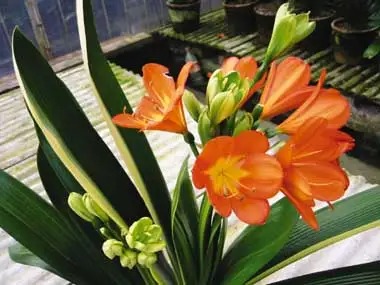
Tips for managing Clivia
: Timely potting: When the first leaf of Clivia seedlings grows to 0.5 cm in height, they should be moved from the sand box to the leaf humus soil for cultivation. Do not wait until the leaves grow taller before transplanting.
More sunlight: The vigorous growth of seedlings requires sunlight. Insufficient light not only affects growth, but also brightness.
Frequent application of light fertilizer: After transplanting, seedlings are in urgent need of nutrition, especially the fall of endosperm. They are more dependent on fertilizers, and light fertilizer liquid fermented from bean cake, hemp seeds, and sesame should be applied once a week.
Control temperature: To prevent the leaves of seedlings from growing too long, the temperature should be controlled between 15-20 degrees. Maintain humidity
: Whether the environmental humidity is suitable is very important for the growth of seedlings, especially for seedlings with faces. If the humidity is not enough, the face will not appear. In order to increase the humidity of the small environment, you can spray the leaves and sprinkle water around the pot. You can also use a small wooden box as a miniature greenhouse. Put the potted seedlings in a wooden box with 10 cm sawdust, spray water once a day, and cover the wooden box with glass, with ventilation holes on all sides.
The key to a good summer
for Clivia is to solve the problem of cooling.
Blocking light: Clivia likes soft sunlight, and direct sunlight cannot be allowed to Clivia. In midsummer, before 8 am and after 6 pm, you can put Clivia in the sun, and at other times it should be placed in a cool place.
Ventilation: Clivia should be placed in a place with air convection. At noon, you can put the electric fan a little further away and blow air on the Clivia for 1-2 hours.
Watering: Pay attention to the water permeability of the soil, water it frequently, and keep the soil humidity at around 30%. After wiping the leaves clean during the dog days, you can use a sprayer or a fine-meshed spray bottle to spray water on the leaves twice at 10 am and 4 pm to cool them down.
Prying the soil: Sprinkle some of the soil in the pot to expose a few fleshy roots. In addition, you should also fertilize the Clivia appropriately. You can water it before fertilizing to avoid damaging the roots.
Cactus
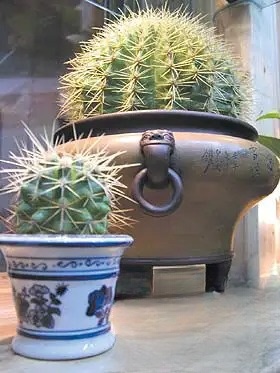

Essentials of cactus cultivation:
Cacti are very popular because of their unique and elegant shapes. They are easy to cultivate and bloom red or bright yellow flowers in summer, which are very beautiful. After flowering, oval fruits are produced. When ripe, they are yellow or purple-red. The berries are fleshy and sweet and can be eaten raw as ordinary fruits. Most families cultivate cacti plants by cuttings, which have a very high survival rate. Summer is the best time, but spring and autumn are also OK. Older and firmer stems or balls should be used for cuttings. Too old or too tender are not suitable. Cut the stems from the mother plant and place them in a semi-shaded and ventilated place to dry for 5-7 days. When the incision is dry and the cortex shrinks slightly inward, cut the cuttings again. However, cacti can be picked and planted at any time. Watering should be less after planting, unlike ordinary flowers and plants. Water a little when it is dry, and it can be slightly moist. The soil must be permeable and cannot accumulate water. It will take about 20 days for cactus to take root after cutting, and 30-40 days for cactus and cactus. It is expected to bloom after 3 days of cutting.
The roots of cacti are generally few and short, and the range of nutrients absorbed from the soil is limited. Therefore, it is necessary to repot frequently. Even if the soil is not replaced with new soil, it is also OK to turn the original pot soil up and down, which will promote the growth of the plant. Generally, the pot should be repotted more than 2-3 times a year, preferably in spring and autumn. The flower pot should be small rather than large, generally just slightly larger than the plant. The pot soil should be loose soil with good drainage and air permeability. The sticky soil can be improved by adding old wall lime powder, plant ash or coal briquette ash.
Don't plant too deep, as long as it can stand firmly in the pot. Cacti can tolerate drought, but the drier the better. Generally speaking, in the growing seasons of spring, summer and autumn, water should be appropriately poured, while in the dormant period of winter, water should be absolutely less, as long as the soil does not dry out. Fertilizer can be decomposed and thin human feces or soybean juice. It should be applied once every 10 days or half a month during the growing season, and stopped in winter. The key to the cultivation of cactus plants is to get more sunlight. The more sunlight, the better. However, proper shade is still required in the hot summer season.
Cactus can reduce indoor pollution
. People have found from flower cultivation practice that cactus plants can reduce indoor air pollution. Because cactus plants close their stomata during the day to prevent water from evaporating, and open their stomata at night to absorb carbon dioxide and produce oxygen. Therefore, placing cacti indoors can increase indoor fresh air and increase the concentration of negative ions in the room. Negative ions are called "vitamins" in the air, so there are many benefits to growing flowers indoors with a few pots of cacti.
Cactus can purify
water If the water is turbid and contains impurities, cactus can be used to purify it. The method is as follows:
take a piece of fresh cactus, cut a few cuts on one end, squeeze it slightly, put it in the water, stir it for a few minutes, and when suspended coagulation appears in the water, let it stand still, and it will become clear in a while. As long as the cactus is not dry, it will still have a purifying effect in about half a month.
Daffodils


Essentials for the cultivation of daffodils
Choose the right flower bulb: There are two types: small bulbs and large bulbs. The small bulbs are produced in Chongming, Shanghai. Therefore, they are called "Chongming Narcissus"; the large bulbs are produced in Zhangzhou, Fujian, and are also called "Zhangzhou Narcissus".
Water tray cultivation: Use sand or coarse sand to press the roots of the daffodil bulbs that already have flower heads. In order to increase the beauty, you can also use rain flower stones and quartz terrazzo sand. Generally, add water to submerge 1/3 of the bulb. Before flowering, it must be cultivated in a sunny place. The water can be changed once every 3 days. If quartz sand is used, the number of water changes can be appropriately reduced, but the concentration of the basin water must be supplemented. When changing the water, take out the stones first, and then gently take out the daffodils. When raising daffodils, keep the temperature appropriate, generally not higher than 12 degrees, and try to move them to the sun during the day.
Artificial pomegranate flowers: If the flowering period does not catch up with the needs of the festival (it is close to the Spring Festival, and many people hope that it will add some elegance to the festival), artificial temperature can be increased to promote flowering. The most commonly used method is: use the above plastic cover, use electric light to increase the temperature, and stop irradiating when the temperature inside the cover reaches 23 degrees. You can also put a small amount of warm water in the pot to raise the water temperature to 12-15 degrees until it blooms.
Carving shape: cultivate daffodils; you can also carefully carve them into shapes such as crab claws, teapots, flower baskets, and birds according to your personal interests. If you like crab claws, you can choose a crab-shaped flower ball on its back, take 6-8 leaves and flower buds, peel off one scale of the flower ball, and cut the right and left sides of the same number of buds on each side, so that the flowers grown after water cultivation have leaves that bend inward on both sides, just like the claws and feet of a crab. After carving the flower ball, it must be soaked in water for 1 day, then all the mucus on the knife edge is washed off, and a ball of absorbent cotton is evenly applied to the roots. Water is added to 0.5 cm above the root plate so that all the roots are immersed in water until it is placed for viewing, and then the cotton is removed to see its delicate appearance.
How to make daffodils bloom during the Spring Festival
Bulb selection: When buying daffodils, you should choose bulbs that are oblate, firm and elastic, with large stems and small bulbs, and the flowers will be large and numerous.
Time control: Peel off the brown scales 35-40 days before the Spring Festival, wash the soil on the old roots, and use a knife to cut a vertical cut between each flower bud, with the depth controlled at 1/3 of the bulb. Make the bulb loose so that the flowers are easy to pull out. After cutting, place it in a pot and fix it with a stone.
Placement: Daffodils like sunshine, and the suitable growth temperature is about 15 degrees. The daffodil pot should be placed under a sunny window, which can make the daffodil leaves short, the flowers large and the flowering period long. If the light is dim and the temperature is too high, the nutrient consumption will be large, and the daffodils will grow rapidly and appear ugly.
Temperature control: If the room temperature is lower than 7 degrees, the growth will be slow and the flowering period will be delayed. Warm water should be added in the morning and evening to promote flowering, or it can be moved to a sunny place outdoors at noon; if buds appear too early, they should be moved to a low temperature place to control early flowering.
Water management: The water in the pot should cover 2/3 of the bulb. The bulb has enough nutrients for flowering, so there is no need to add more, but you can add a little salt in the water to prolong the flowering period; it is generally better to change the water in the pot every 3 days. To
make daffodils bloom for a long time, put 1-2 aspirin tablets in the water where you grow daffodils, which can make the flowers grow strong and lush; when the flowers are in full bloom, put a little salt in the water to make the flowers bloom for a long time. However, when there are buds about to bloom, do not add salt, which will inhibit the buds from opening. To make daffodils colorful , if you want to make the daffodils bloom colorfully, you can add red, blue, green and other colors to the water, or inject color liquid into the flower arrows by injection, and you can bloom flowers of various colors. Asparagus fern

Essentials of cultivation of asparagus fern
Asparagus fern, also known as cloud bamboo or plane grass in some places. It is native to South Africa and likes to grow in a warm, humid, semi-shaded and ventilated environment. Asparagus fern has deep roots and is fleshy. It is advisable to use deep barrel pots and sandy soil with good drainage and light humus when potted. The key to the management of asparagus fern is water supply. Potted plants require dry and wet conditions. The air should be kept moist at all times. When the weather is dry, water should be sprayed on the leaves and the surrounding area. Long-term excessive dryness will cause the tips of the leaves to turn yellow, but too much watering will cause root rot, the leaves will gradually turn yellow, and in severe cases, the leaves will fall off or even die. Asparagus fern is afraid of exposure to the sun and severe cold. Therefore, it should be placed under an outdoor shade or on a windowsill in summer and autumn. In winter, it should be placed in a sunny place indoors. The room temperature should be kept at 10-15 degrees Celsius, and at least not less than 5 degrees Celsius. During the growth period of asparagus fern, it can be watered with decomposed thin liquid fertilizer once every 10-15 days, and more nitrogen fertilizer and potassium fertilizer should be applied.
Methods to prevent yellowing of asparagus fern leaves
Plants and pots should be appropriate, not too large or too small, otherwise the plant is large, the pot is small, the pot soil is small, and the nutrient area is insufficient, the leaves will turn yellow.
The ambient temperature should not be too high, and soot and dust pollution should be prevented.
Fertilizer should not be too concentrated to prevent root burning and leaf shedding.
The soil should be loose, otherwise water will accumulate and the roots will rot, but it should not be too dry,
otherwise the leaves will lose water and turn yellow. The sunlight should not be too strong, otherwise the leaves will turn yellow and fall off.
Asparagus fern "fears"
strong sunlight: Asparagus fern is a negative plant. Except for winter, it should be cultivated in a semi-sun and semi-shade place in other seasons. Pay special attention to the strong sunlight in summer, otherwise the asparagus fern will be burned by strong light.
Concentrated fertilizer: Asparagus fern does not require much fertilizer. It can be applied with low-grade fertilizer liquid once every half a month to 20 days during the growing season. Concentrated fertilizer will cause fertilizer damage.
Excessive water: Some flower growers believe that asparagus fern is not afraid of water; the more water, the better it grows. Actually, it is not the case. Asparagus fern is afraid of having enough water. If the pot soil is too wet for a long time, yellow leaves will appear and leaves will fall. When watering asparagus fern, it should be watered in a dry and wet manner. The dry water should be dry until the pot soil turns white, and the wet water should be soaked. Do not water the slightly dry pot soil. Water thoroughly when watering. This is the key to ensure that asparagus fern does not have yellow leaves and leaves. Practice has proved that this watering method will make asparagus fern grow vigorously. But you should spray water on the leaves more often, 2-3 times a day. When the pot soil is dry and white, you should water
it thoroughly immediately. Compacted soil: Asparagus fern likes to grow in loose soil. If the culture soil is compacted, it will cause poor drainage of the pot soil, and finally the roots will rot due to waterlogging.
Iron deficiency and rain: Asparagus fern is a foliage plant. Iron deficiency will cause asparagus fern to lack green, so some ferrous sulfate should be supplemented frequently. On rainy days, asparagus fern should avoid rain and should be cultivated in a semi-shaded and semi-sunny place. Excessive raindrops will cause mud to stick to the calligraphic leaves, causing yellow leaves and dead leaves.
Rose

Rose cultivation techniques
Roses are often planted in pots at home. Roses have a relatively developed root system and are suitable for large and deep flower pots. The key to managing potted plants is to be good at cutting branches. Generally, 2-3 buds (2-3 compound leaves) are left upward from the base of the flower branches, and the rest are cut off. This ensures that the branches are strong, the flowers are prosperous, and the tree has a good posture. Rose potted plants should be repotted every year, and the roots should be trimmed and the soil should be changed. Small pots are gradually enlarged year by year. It is best to repot before wintering. Watering of roses varies according to the season. In summer, water once in the morning and evening, and the amount of water should be more, especially in the evening; each time should be watered enough. In spring and autumn, water once every morning or sunset, but watering should be controlled in early spring, late autumn and the rainy season. Keep the soil slightly moist in winter, as long as it is not completely dry. Roses like fertilizer. When watering, add liquid fertilizer (preferably decomposed liquid from beans, fish viscera, etc.) to the water every week to keep the leaves thick, dark green and shiny. Before budding in early spring, you can apply a concentrated liquid fertilizer once. If it has already sprouted and opened and leaves, it is not suitable to apply fertilizer at this time when new roots are growing vigorously. Fertilize in May when the flowers are in full bloom. In June, after the flowers have faded and before the axillary buds have been released, you can apply a medium-concentration fertilizer liquid once. In September, when the axillary buds are about to sprout for the fourth or fifth time, apply another medium-concentration liquid fertilizer to promote the flourishing of autumn flowers. In December, during the dormant period, apply decomposed organic fertilizer to overwinter. The growth environment of roses should be sunny (at least 4-5 hours a day) and well-drained and ventilated. Potted roses should be loosened frequently to prevent the soil from becoming compacted. This is also one of the keys to ensure that the green flowers of roses are large. Roses are cold-resistant in winter, but they are afraid of cold winds in early spring. In winter, as long as they are placed in a sheltered place and the soil is kept at a certain humidity, they can generally overwinter safely. However, when new buds sprout in early spring, avoid the invasion of cold winds. If you neglect it, the plants will quickly dehydrate and die.
Prevention and control of common rose diseases Common rose
diseases are black spot and powdery mildew. The main method of prevention and control is: spray lime sulfur mixture before the leaf buds sprout in early spring, or spray Bordeaux mixture when sprouting. If powdery mildew is found, it should be scraped off in time, and seriously diseased branches should be cut off and burned immediately to prevent it from spreading. You can also use synthetic laundry detergent to wash, rinse with clean water after 2-3 minutes, do it once every other day, and it will be eliminated after 2-3 times. Increasing phosphorus and potassium fertilizers can enhance the disease resistance of plants. Common insect pests of roses are aphids and red spiders. Roses cannot escape their invasion almost throughout the entire growth period. You can use 40% dimethoate emulsion 1500-2500 times liquid spray to kill, the effect is very good. Spraying with 1000 times liquid of household mosquito repellent dichlorvos is also effective.
Tips for cutting roses
The plum rain season is the best time for cutting roses. Cuttings in full sunlight are easy to root and have a high survival rate.
Selection of cuttings: Select 3-4 nodes of the top branches after flowering. After the branches are removed, do not insert them directly into the medium. Use a sharp blade to cut the wound into a "horse ear shape" to facilitate the early formation of callus tissue.
Medium: At present, the commonly used media include ridge husk ash, frog stone, mountain mud, etc., among which ridge husk ash is the best. Before using the medium, it should be exposed to strong light for 2-3 days to kill the bacteria.
Cutting process: The treated cuttings should be inserted into the medium in time, and the general depth is 1/3-1/2 of the length of the branch. After insertion, spray water in time and place it in the sun. On sunny days in hot summer, do not let the branches lose water, and be sure to maintain the humidity around the cutting pot. Otherwise, the branches will dry up and die. Full-day cuttings of roses can be carried out from early June to late September.